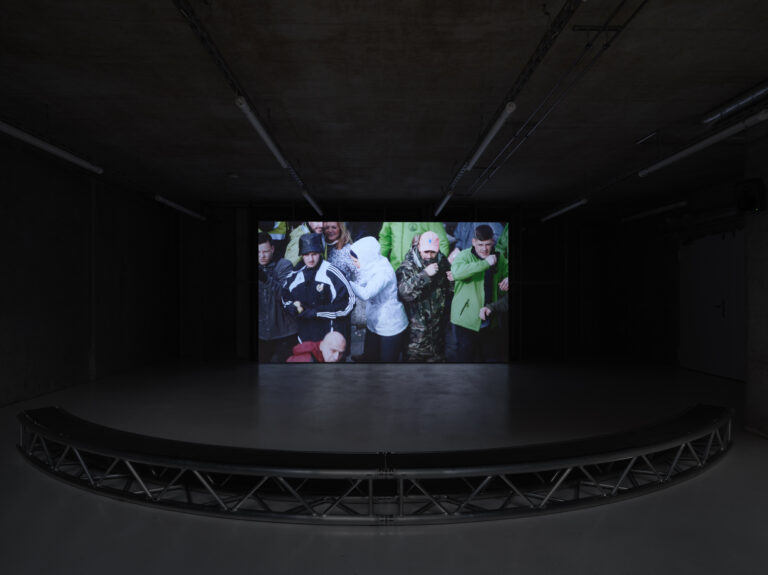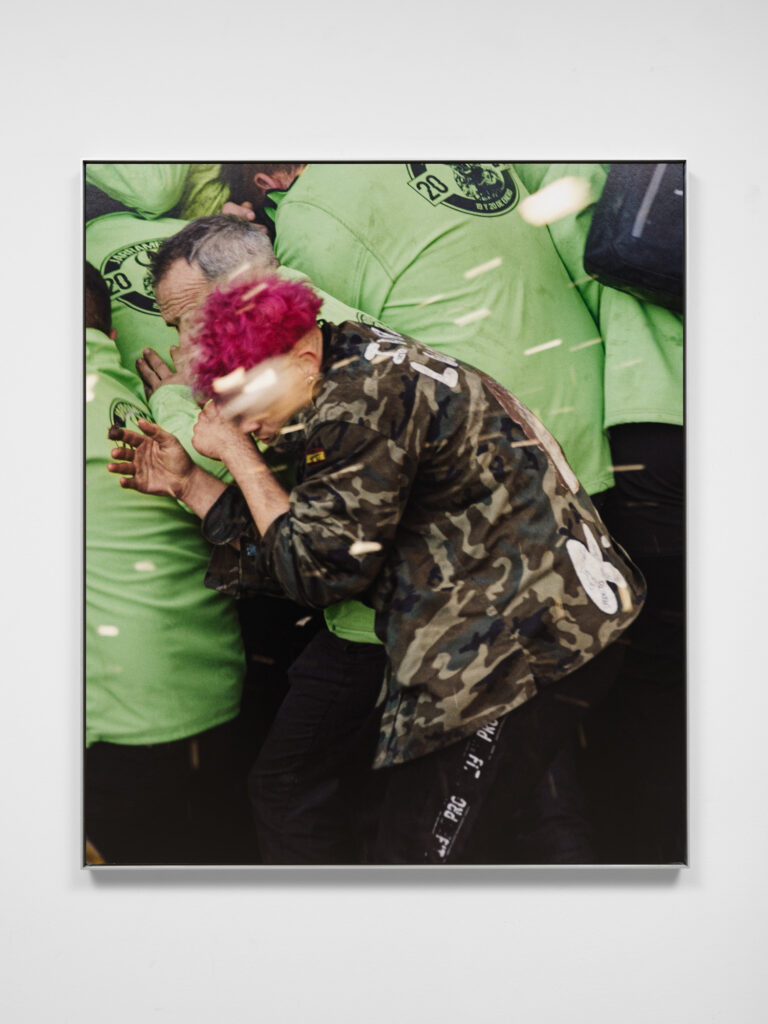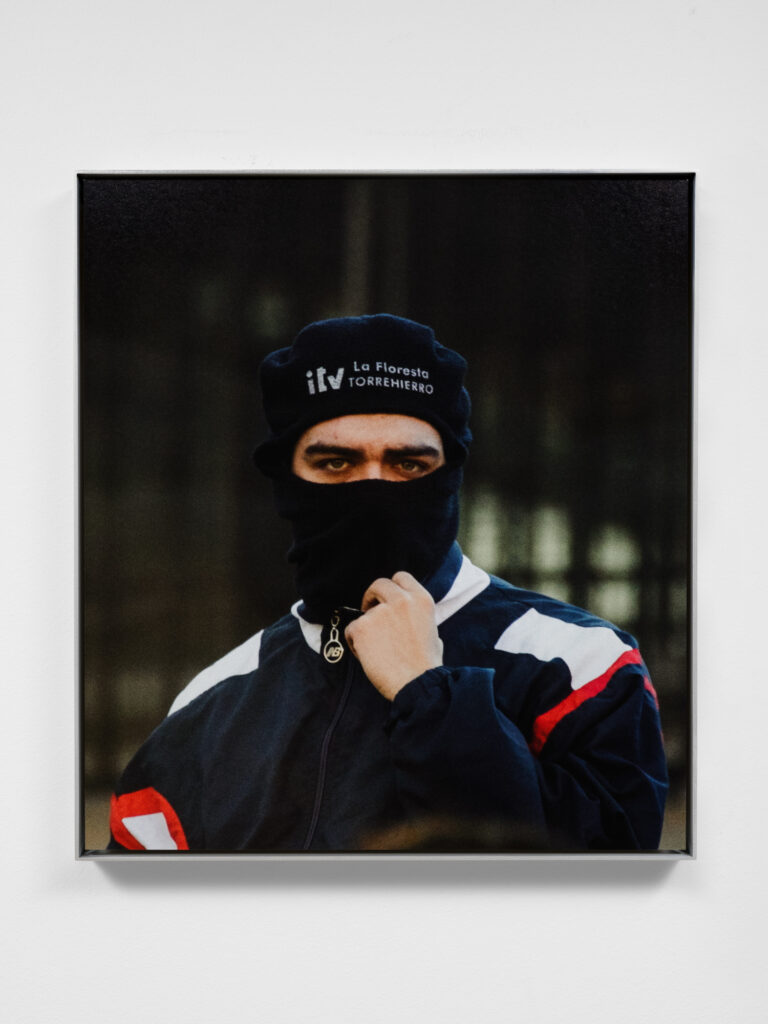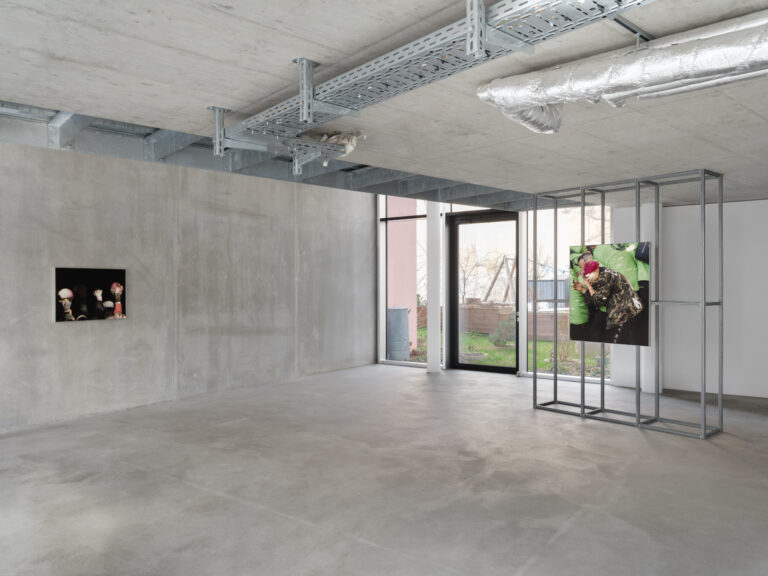Yalda Afsah
Barrage
14 MAR until 19 APR 2025
Opening – 13 MAR 2025, 6-9 pm
Molitor is pleased to present Yalda Afsah’s first exhibition at the gallery
and the premiere of her newest film, Jarrampla (2025).

Installation views by Marjorie Brunet-Plaza
All images courtesy of the artist and
Galerie Molitor, Berlin.
Afsah’s films explore the interface between human and animal to construct a topography of cultural rituals in the present. Informed by first-hand research into local traditions around the world, Afsah traces the boundary between beast and person, youth and adulthood, examining rites of domestication, initiation, and violence. Past works have documented men’s ritual taming of wild horses in Galicia, the shearing of animals used in bullfighting traditions in France, and the intergenerational care of a community of pigeon enthusiasts in Los Angeles. Through films marked by their visual intensity, sonic skill, and quiet suppression of narrative, Afsah investigates the interplay of cruelty and intimacy, care and submission. Her films speak to the latent violence harbored by tradition, and the ways control, domestication, and initiation shape masculinity—and perhaps human society as a whole.

Installation views by Marjorie Brunet-Plaza
All images courtesy of the artist and
Galerie Molitor, Berlin.

Installation views by Marjorie Brunet-Plaza
All images courtesy of the artist and
Galerie Molitor, Berlin.
For its premiere at Galerie Molitor, Jarramplas is presented on purposebuilt scaffolding and displayed with four related photographs from her series Barrage. The film begins with the violent-sounding clamor of fireworks in a night sky. Slowly, young people wearing ponchos in a rainy, southern European town prepare for some sort of event: a fight? A celebration? The camera’s gaze focuses on turnips, collected by big machinery and ultimately thrown at one another. Over the course of roughly fifteen minutes, we glimpse a picture of contemporary youth at a crossroads. By intentionally withholding key contextualizing information, Afsah asks us to question what is really going on here. Installed throughout the gallery space, a series of photographs allows viewers to examine the visual tension of Afsah’s project: a man in military fatigue cowers, about to be hit by organic matter; a number of turnips are hoisted up like trophies or heads; a young person’s hands take on an almost hawklike position; a man in a balaclava stares back at the camera. Afsah’s films and photographs are about what remains unseen as much as what is revealed. Crucially, in Jarramplas, the artist never reveals the target of the young people. Through precise editing, intensified by the films’ disorienting soundtrack, the young people seem to be fighting each other.

Installation views by Marjorie Brunet-Plaza
All images courtesy of the artist and
Galerie Molitor, Berlin.
To make Jarramplas, Afsah traveled to the annual Jarramplas festival, which has taken place each January for the past hundred years in the western Spanish town of Piornal, Cáceres. The festival’s name is derived from the word arramplar (“to steal”) and refers to a figure called the “Jarrampla,” who, according to legend, was deterred from stealing farmers’ cattle. Today, this myth has been transformed into an annual ritual, coinciding with the day of Saint Sebastian, in which an individual is selected to dress up in a mask, armor, and multi-colored ribbons, and then showered with turnips thrown by locals. Afsah’s exhibition is a cross-section of a specific cultural tradition, of the lingering shadow of history, and the toxic bond created through mutual antagonism. Afsah portrays a scenography of the violence that increasingly surrounds our everyday.
Yalda Afsah (b. 1983, Berlin) is a German-Iranian artist and filmmaker who lives and works in Berlin. Her practice explores the extent to which filmed space is constructed through cinematic techniques. Her works have been shown at various international exhibitions and film festivals, including Manifesta 13, Locarno Film Festival, New York Film Festival, Berlinische Galerie, Institute of Contemporary Arts London and Neuer Berliner Kunstverein. She has had solo exhibitions at JOAN, Los Angeles (2023), Between Bridges, Berlin (2023), HALLE FÜR KUNST Steiermark, Graz (2022) and Kunstverein München (2022). She was awarded the Hans Purmann Prize in 2023 and is currently teaching professor at HFBK, Hamburg.
